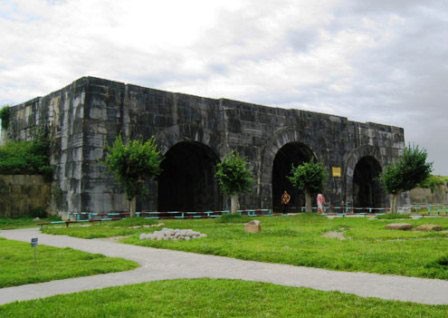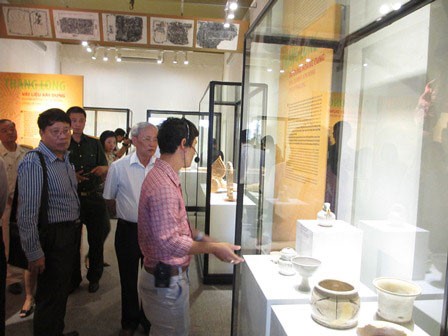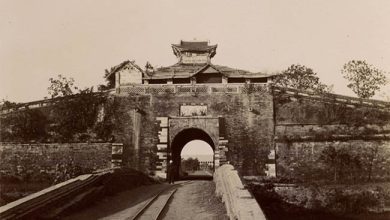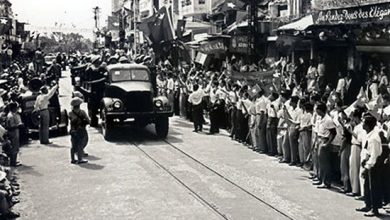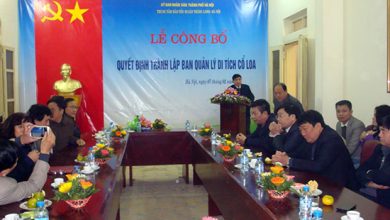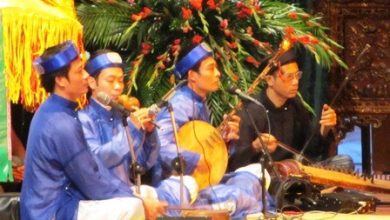To deserve as the world cultural heritages
According to Mr. Nguyen Van Son, Director of Thang Long- Hanoi Heritage Conservation Center, the improvement of values of the Imperial Citadel of Thang Long and the Citadel of Ho Dynasty has similarities; studies will increase in-depth awareness of cultural and historical values of the two heritage sites.
The Imperial Citadel of Thang Long site
For two continuous years (2010 and 2011), two ancient capital cities of Vietnam, the Imperial Citadel of Thang Long and the Citadel of Ho Dynasty, were recognized by UNESCO as the world cultural heritages. Besides their similarities, such two sites were identical to each other regarding type of vestiges: They are architectural vestiges but, basically, archaeological ones because all vestiges of palace, temples and feretories… disappeared, the remaining included only foundation and archaeological relics underneath the ground.
The Citadel of Ho Dynasty site
Necessity of annual archaeological study
According to Mr. Son, regarding heritages of which vestiges are archaeological ones, the annual archaeological study will help us understand planning, architectural characteristics and construction techniques, and increase the source of relics displayed in museums.
Among them, it is required to converse the primitive conditions of vestiges on the ground and newly exposed archaeological vestiges. The vestiges on the ground in the Imperial Citadel of Thang Long include Doan Mon Flag Tower, Dragon Stair, Kinh Thien Palace foundation, Northern Gate. In the Citadel of Ho Dynasty, they are stone city wall and four gates. Regarding archaeological vestiges, they are the site No. 18 Hoang Dieu in the Imperial Citadel of Thang Long and Nam Giao Altar site in the Citadel of Ho Dynasty. It is also required to converse the primitive conditions of vestiges on the ground and plan on next excavation of archaeological vestiges in the future.
Regarding architectural vestiges which satisfy with conditions of restoration, such as Main Gate, Northern Gate and Kinh Thien Palace foundation in the Imperial Citadel of Thang Long and four gates in the Citadel of Ho Dynasty.
The immaterial cultural study in the two sites is necessary because it is related to the Royal activities. This study can both increase the values and attractiveness of heritage sites toward visitors…
Festivals such as Quang Chieu colored lantern festival, Nam Giao altar festival, Xa Tac alter festival, Dong Co temple festival, shuttlecock kicking, swimming festival… in the Imperial Citadel of Thang Long, and Nam Giao Altar vestige in the Citadel of Ho Dynasty have still remained many folk singing arts in the capital city.
Therefore, it is required to study to reach the general research and recover gradually some ceremonies or arts, particularly Nam Giao worshiping ceremony (which was outside worshiping platform, one of the important ceremonies in feudal dynasties in Vietnam) in the two capital cities. Nam Giao Altar in the Imperial Citadel of Thang Long was excavated in 2007 and 2008 with limited area of 950 m2 and due to many difficulties of premises, partial architectural vestige was found out. Nam Giao Altar in the Citadel of Ho Dynasty was excavated for four times with total area of over 12,000 m2 and the architectural foundation was nearly full.
Assoc. Prof, Dr. Tong Trung Tin, Director of Institute of Archaeology, said that the study of two sites would bring us about many precious things. Thanks to wall in the Citadel of Ho Dynasty, we can understand more partial wall of the Imperial Citadel of Thang Long under Ly- Tran dynasties which disappear now. The study of Nam Giao altar in the Citadel of Ho Dynasty and the Imperial Citadel of Thang Long will help us in-depth understand their significant historical and cultural values.
Improvement of heritage values for sustainable tourism development
According to Mr. Son, for potential tourism development, Thang Long- Hanoi Heritage Conservation Center and Conservation Center for Ho Citadel should make long-term plan to increase communication and advertisement of heritages to attract domestic and foreign tourists to these world cultural heritages.
Visiting exhibits of the Imperial Citadel of Thang Long and the Citadel of Ho Dynasty heritages Photo: Huy Anh
One advantage of the Imperial Citadel of Thang Long is its location at the Capital. Currently, tourism agencies have recommended the Imperial Citadel of Thang Long as a destination for domestic and foreign tourists who visit Hanoi. Moreover, upon UNESCO’s recognition of the Imperial Citadel of Thang Long as the world cultural heritage, Hanoi City People’s Committee in cooperation with the Management Board of the Imperial Citadel of Thang Long realized many activities to advertise and publicize the Imperial Citadel of Thang Long, also develop the tourism and improve values of this cultural heritage.
Mr. Do Quang Trong, Director of the Conservation Center for Ho Citadel said that upon recognition as the world cultural heritage on June 2011, the Citadel of Ho Dynasty received some 150,000 tourists who are mainly domestic ones, averagely 60,000 tourist/year, (30% provincial tourists, 65% tourists from other provinces, and 5% international and diplomatic tourists).
The Center takes the initiative to publicize the heritage through display, descriptions, advertisement on website, exhibition, events, establishment of “I love history” club, “Let’s explore the Citadel of Ho Dynasty”…
Currently, two centers have planned to increase the attractiveness by investment and restoration of some typical works, display of highly representative and prominent exhibits…, training of tour guide staff good at Vietnamese and English and other languages. Both centers also determined to advertise more broadly the Imperial Citadel of Thang Long and the Citadel of Ho Dynasty because their main values are underneath the ground. It will be difficult to realize their values and special characteristics if you are not experts. Hai Trung tâm cũng xác định, cần quảng bá rộng rãi hơn để thế giới biết đến Hoàng thành Thăng
| Vietnam has so far had seven properties as the world natural and cultural heritages, of which three capital city heritages include the Imperial Citadel of Thang Long, the Citadel of Ho Dynasty and the Imperial City in Hue. The Imperial City in Hue has many favorable conditions for the value improvement because it has complex of good architectural vestiges on the ground; documents of scripts and vestiges are remained… The Imperial Citadel of Thang Long and the Citadel of Ho Dynasty have only vestige of foundation and archaeological relics underneath the ground. |


